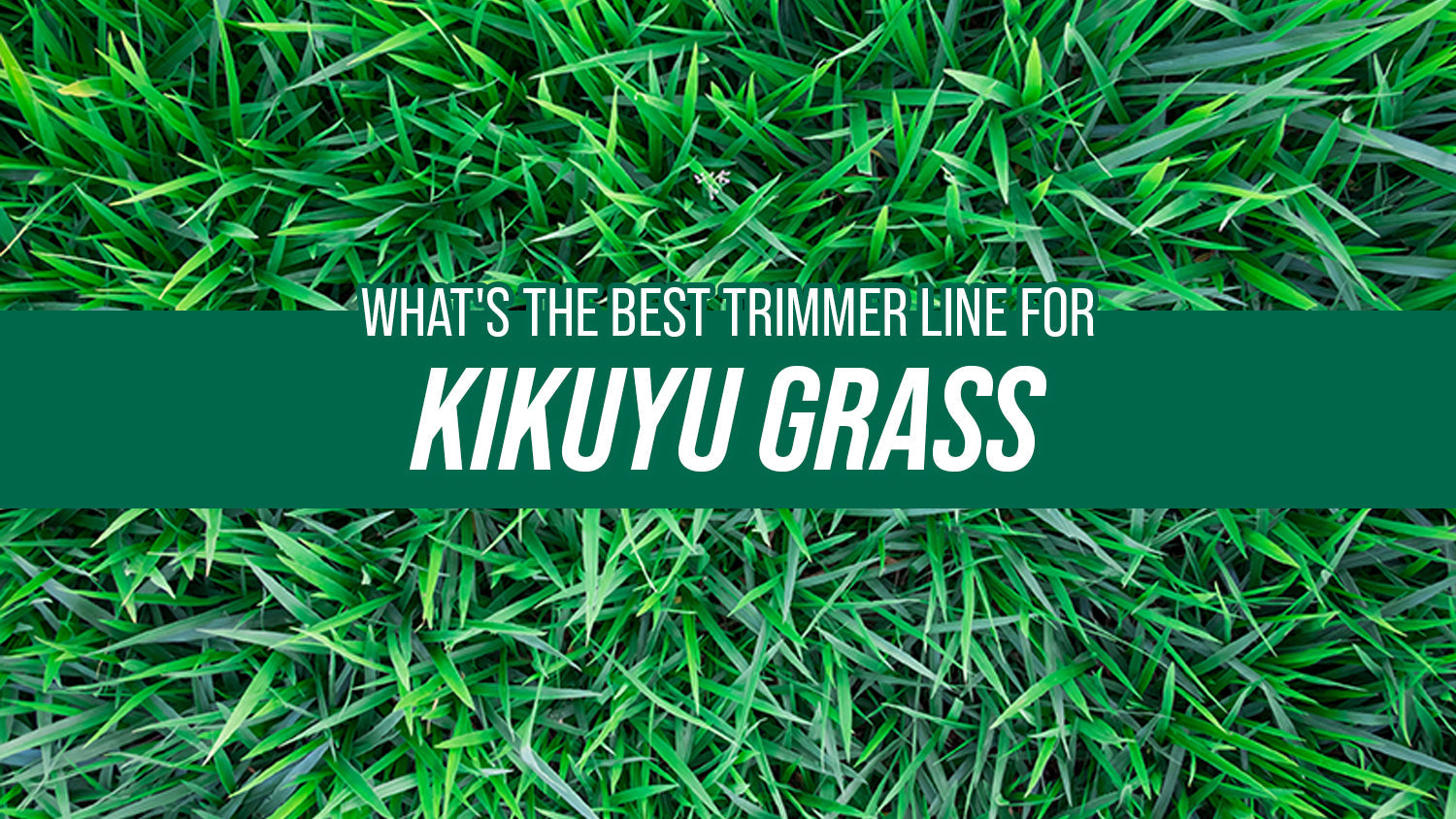A beautifully manicured lawn is the pride of any homeowner, but uneven trimming can mar its flawless appearance. In this comprehensive blog post, we'll unravel the mysteries behind uneven lawn trimming and provide expert advice on how to fix and prevent this common problem, ensuring your lawn stands as a testament to precision and perfection.
1. Understanding the Culprits:
Achieving a uniformly trimmed lawn begins with a thorough understanding of the factors contributing to uneven cuts. Let's dissect the culprits and delve into the nuances:
- Blade Condition: Blades are the frontline soldiers in the battle for a well-trimmed lawn. Dull or damaged blades can tear rather than cut, resulting in uneven edges. Regularly inspect and maintain your trimmer blades to ensure they're sharp and in optimal condition.
- Mowing Height Discrepancies: Mismatched mowing heights can lead to an uneven lawn surface. Different grass types have specific height preferences, and adjusting your mower accordingly is crucial. Understanding the ideal height for your grass ensures a uniform cut, preventing patches and unevenness.
- Influence of Mowing Patterns: Repetitive mowing patterns contribute to unevenness. Whether mowing in a single direction or following the same path every time, it can lead to noticeable lines and uneven growth. Vary your mowing patterns regularly to encourage a more even distribution of grass and prevent distinct patterns from forming.
- Grass Health and Growth Rate: Uneven growth rates among different grass varieties in your lawn can result in a visually unbalanced landscape. Some grasses may outpace others, creating patches and uneven surfaces. Understanding the growth characteristics of each grass type helps in planning and adjusting your mowing routine accordingly.
- Soil and Terrain Issues: Inconsistent soil composition and terrain irregularities contribute to uneven trimming challenges. Compacted soil or variations in elevation can impact the effectiveness of your trimmer. Address soil health through aeration and consider the lay of the land when mowing to ensure a smoother cutting experience.
2. Selecting the Right Equipment:
Choosing the optimal trimmer is a pivotal step in achieving a flawlessly trimmed lawn. Let's embark on a detailed exploration of the key considerations when selecting the right equipment:
- Lawn Size and Type: Understanding the dimensions of your lawn is crucial. For smaller lawns, lightweight and maneuverable electric or battery-powered trimmers may suffice. Larger lawns, on the other hand, benefit from the robustness of gas-powered trimmers. Consider the power source that aligns with your lawn's size and your personal preferences.
- Grass Type Compatibility: Different grass types demand different cutting approaches. Research the specific grass varieties in your lawn and choose a trimmer that accommodates their characteristics. Some grasses thrive with a gentler touch, while others require more robust cutting power.
- Cutting Mechanism: Trimmers employ various cutting mechanisms, such as string, blades, or a combination of both. The choice depends on your preferences and the type of vegetation you need to tackle. String trimmers are versatile and suitable for regular maintenance, while blade-based trimmers are more robust and effective for thicker growth.
- Power and Performance: Evaluate the power and performance features of trimmers. Gas-powered trimmers offer high performance and are ideal for larger lawns, while electric and battery-powered options are often more convenient for smaller spaces. Consider features like adjustable power settings for versatile use.
- Adjustable Features: Look for trimmers with adjustable features that enhance comfort and usability. Telescopic shafts and adjustable handles allow you to customize the trimmer to your height and preferred working position. Ergonomic design elements contribute to a more comfortable and efficient trimming experience.
- Ease of Maintenance: Consider the ease of maintenance when selecting a trimmer. Features such as tool-less blade replacement and easy access to essential components simplify upkeep. A trimmer that is simple to maintain will save you time and effort, ensuring your equipment remains in optimal condition.
- Budget Considerations: Establish a budget range based on your lawn care needs. While trimmers are available at various price points, it's crucial to strike a balance between cost and features that align with your lawn maintenance requirements. A well-reputed trimmer within your budget can deliver reliable performance.
- Brand Reputation and Reviews: Research the reputation of different trimmer brands and read user reviews. A brand with positive reviews often indicates reliability and performance. Pay attention to user experiences, particularly those with lawns similar to yours, to make an informed decision.
3. Perfecting Mowing Techniques:
Mastering the art of mowing is essential for achieving a consistently groomed lawn. Let's delve into the nuances of perfecting mowing techniques to ensure each pass contributes to a seamless and visually pleasing landscape:
- Correct Mowing Height: Understanding the ideal mowing height for your grass type is paramount. Each grass variety thrives at a specific height, and cutting too low can stress the plants and create an uneven surface. Consult grass-specific guidelines and adjust your mower accordingly for a healthier and more uniform lawn.
- The Overlapping Technique: Embrace the overlapping technique to eliminate missed spots and create a more even cut. Each pass of the mower should slightly overlap the previous one, ensuring that the entire lawn receives consistent attention. This method prevents distinct lines and promotes a smooth, professional finish.
- Varying Mowing Directions: Repetitive mowing in the same direction can lead to noticeable patterns and uneven growth. Vary your mowing direction regularly to encourage an even distribution of grass and prevent the development of distinct lines. This technique contributes to a more harmonious and visually appealing lawn.
- Timing Matters: Mow when the grass is dry to prevent clumping and ensure a clean cut. Wet grass can clog the mower, leading to uneven trimming and potential damage to the lawn. Choose the right time of day, preferably in the morning or early evening when the grass is dry, for optimal results.
- Regular Maintenance of Mower Blades: Sharp mower blades are essential for a clean and precise cut. Regularly inspect and sharpen your mower blades to maintain their effectiveness. Dull blades tear the grass instead of cutting it, resulting in uneven edges and a less manicured appearance.
- Trimming Along Edges: Pay attention to the edges of your lawn, as they contribute significantly to its overall appearance. Use a trimmer or edger to define borders and create crisp, well-defined edges. This step enhances the overall aesthetics and ensures a polished finish.
- Mowing in Sections: For larger lawns, consider mowing in sections to maintain control and focus on achieving precision in each area. Dividing the lawn into manageable sections allows for a more systematic approach, reducing the likelihood of uneven trimming.
- Adjusting Technique for Slopes: Adapt your mowing technique when dealing with slopes or uneven terrain. Mow across slopes rather than up and down to minimize the risk of scalping or uneven cutting. Take your time and adjust your approach to the lay of the land for a more uniform result.
4. Tackling Uneven Terrain:
Uneven terrain poses a unique set of challenges in lawn care, but with strategic approaches, you can achieve a uniformly groomed lawn. Let's explore expert strategies for tackling uneven terrain and ensuring every inch of your outdoor space receives the attention it deserves:
- Assessing Terrain Variations: Begin by conducting a thorough assessment of your lawn's topography. Identify areas with slopes, bumps, or irregularities that contribute to uneven terrain. Understanding the lay of the land is crucial for developing tailored strategies.
- Mowing Across Slopes: When dealing with slopes, adjust your mowing technique to traverse across the slope rather than vertically. Mowing across slopes minimizes the risk of scalping and promotes a more even cut. Take your time and maintain a consistent pace to ensure precision on inclined surfaces.
- Adaptive Mowing Heights: Different areas of uneven terrain may demand varied mowing heights. Adjust the cutting height of your mower based on the landscape variations. Higher settings on slopes can prevent excessive grass removal, maintaining a lush appearance while preventing soil erosion.
- Terracing for Visual Harmony: Consider creating terraced areas on steeper slopes to enhance visual appeal and simplify mowing. Terracing involves creating level platforms at intervals, allowing for more controlled and manageable mowing. It also reduces the risk of soil erosion on steep slopes.
- Utilizing a Walk-Behind Trimmer: For areas that are challenging to reach with a traditional mower, a walk-behind trimmer can be a valuable tool. These trimmers are designed for precision in tight spaces and can navigate uneven terrain more effectively, ensuring a uniform cut in hard-to-reach areas.
- Alternating Mowing Patterns: Vary your mowing patterns to account for the irregularities in the terrain. Changing direction with each mowing session helps distribute the stress on the grass more evenly, preventing the development of distinct patterns and contributing to a visually harmonious lawn.
- Establishing Natural Borders: Define natural borders using landscape features like rocks, plants, or mulch to delineate areas with significant elevation changes. These borders not only enhance the aesthetic appeal but also serve as visual cues for adjusting your mowing technique around uneven terrain.
- Manual Touch-Ups with Hand Tools: In areas where machinery may be challenging to maneuver, resort to hand tools like shears or manual trimmers for precise touch-ups. These tools allow for meticulous grooming around obstacles and ensure a consistent appearance in hard-to-reach spots.
5. Routine Maintenance for Precision:
Consistent and meticulous routine maintenance is the bedrock of achieving a precisely groomed lawn. Dive into the details of maintaining your lawn care equipment and implementing regular practices that ensure every cut contributes to the overall precision of your outdoor space:
- Sharp Blades for Clean Cuts: Regularly inspect and sharpen your mower blades to maintain their cutting effectiveness. Dull blades tear the grass, resulting in uneven edges and a less manicured appearance. Sharpening blades at the beginning of the mowing season and periodically throughout ensures a clean and precise cut.
- Regular Lubrication and Cleaning: Keep your mower and trimmer in top condition by adhering to a schedule of regular lubrication and cleaning. Lubricate moving parts to prevent friction, and clean debris, grass clippings, and dirt from the machinery. A well-maintained tool operates efficiently, contributing to a more accurate trim.
- Air Filter and Spark Plug Maintenance: Inspect and clean or replace the air filter and spark plug according to the manufacturer's recommendations. A well-maintained engine ensures optimal performance and fuel efficiency. Regularly servicing these components contributes to the overall precision of your lawn care equipment.
- Calibration of Cutting Height: Ensure the cutting height of your mower is accurately calibrated. Follow the manufacturer's guidelines to adjust the cutting height based on your grass type. Proper calibration prevents scalping and promotes a consistent cut, contributing to the overall uniformity of your lawn.
- Scheduled Blade Replacements: Monitor the condition of your mower blades and trimmer lines. If blades are chipped, bent, or excessively worn, replace them promptly. Worn-out blades compromise cutting efficiency, leading to uneven trimming. Scheduled replacements maintain the precision of your equipment.
- Scheduled Aeration: Regularly aerate your lawn to enhance air circulation, water absorption, and nutrient penetration into the soil. Aeration reduces soil compaction, promoting healthier grass growth and minimizing the risk of uneven surfaces. Schedule aeration as part of your routine maintenance plan.
- Weed and Debris Management: Consistently address weed growth and remove debris from your lawn. Weeds and debris can disrupt the even growth of grass and contribute to an unkempt appearance. Regular weeding and cleanup sessions maintain the uniformity of your lawn's surface.
- Seasonal Fertilization: Implement a seasonal fertilization schedule to provide your lawn with essential nutrients. Well-nourished grass grows evenly and appears more vibrant. Follow recommended fertilization practices based on your grass type and local climate for optimal results.






